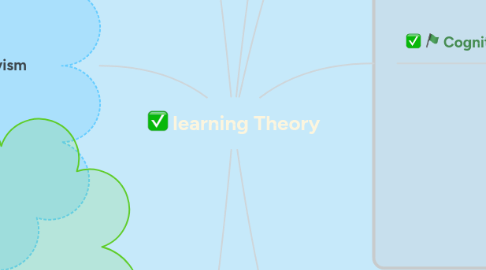
1. Social learning theory
1.1. By Albert Bandura, posits that people learn from one another, via observation, imitation, and modeling.
1.2. Students learn from what they observe.
1.3. Students learn from different models according to Bandura
1.4. Children pay attention to all these people or models and code their behavior.Bandura
1.5. Imitation can help positively or negatively
1.6. the model that you want to imitate sometimes is not the correct one for example some students want to imitate their teachers
2. social contrustivism
2.1. It is a theory of the way in which the human being learns in light of the social situation and the community of the learner.
2.2. in education
2.2.1. Allows students to learn new knowledge.
2.2.2. Helps the student apply his learning in real situations, which prepares him for the future
2.2.3. Encourages interaction among students.
2.2.4. The teacher is the promoter of significant learning.
2.2.5. the teacher is a mediator between knowledge and learning.
3. Multiples intellenges.
3.1. Each person has eight intelligences
3.1.1. verbal linguistic.
3.1.1.1. people who have this intelligence
3.1.1.1.1. politicians, writers, poets, journalists and actors,
3.1.2. visual-spantial
3.1.2.1. each person observes the world and objects from different perspectives.
3.1.3. musical
3.1.4. naturalist
3.1.4.1. It is one of the essential intelligences for the survival of the human being
3.1.5. logical-mathematical
3.1.5.1. The capacity for logical reasoning and the resolution of mathematical problems.
3.1.6. interpersonal and intrapersonal
3.1.7. kinesthetic
3.2. Gardner says that.
3.2.1. all people own each of the eight intelligence classes, although each one stands out more in some than in others.
3.3. In education
3.3.1. Not all students have developed all the intelligences some are more intelligent in one area and others in another.
3.3.2. the students are sometimes the center of the class.
4. Behaviorim
5. It is a theory of learning that only focuses on objectively observable behaviors and discounts any independent activity of the mind.
5.1. In this theory there are two types of conditioning.
5.1.1. classical condictioning (Pavlov
5.1.1.1. An example is when the teacher says he will give a point for giving your opinion then you think. response stimulus.
5.1.2. operant conditioning Skinner.
5.1.2.1. An example of this type of operant conditioning is a parent rewards a child for completing his chores with a piece of candy.
5.2. In education
5.2.1. The motivation is alien to the student.
5.2.2. Creates little relationship between teacher and student
5.2.3. if there is no encouragement the student does not strive
6. Cognitivism
6.1. It focuses on the study of the human mind to understand how it interprets, processes and stores information in memory.
6.1.1. It proposes cognitive stimulation through materials that train basic logical operations. Advocates the creation of instructional sequences. Resources that allow students to search for answers given one or several stimuli presented on the screen.
6.2. Discovery learning. Bruner
6.3. In education
6.3.1. Its main objective is for the student to modify their knowledge but for this the teacher must find ways for the student to learn.
6.3.2. by using this theory motivates the students and thus the learning is more significant.
6.3.3. curiosity increases in the student
